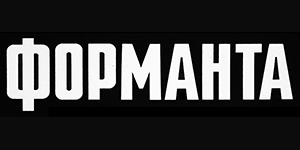
Pop culture could have made a folklore character, supplier of mystical stories, out of Soviet factories – places where backroom activities used to boil firing sparks or would flow slowly but surely.
Formanta radio factory located in Kachkanar went broke in the early 2000s – TVs, water heaters, electric light bulbs and “other vacuum cleaners” failed to keep that shelter afloat – the shelter of the Soviet music industry, the modest ray of hope – after the USSR collapse. Strategic Offensive Reductions shattered the military production which was the major source of income and the epicenter of the authorities’ attention. The fact of scant profit conditioned by the forcefully limited output volume and high cost has nothing to do with the pages of the greatest histories eminent synth makers ever lived through, hasn’t it?
The five-year plan had neither time nor heart for music – no one was going to make Formanta famous, who would have thought or cared of brand names, synths and marketing? Poor little factory faced gigantic will of the supremes. Russia had no clue what to do with music industry – ain’t it one of those beautiful tales? What would you do in that magic castle, blindfolded commons with hammers and sickles you are to keep clenched in your intelligent hands? Factories had to produce electronic music equipment as an obligatory part of the program in order to somehow (actually, anyhow) increase the plaguy output. Best engineers worked for the ideology, while civil production at the defense industry premises was considered to be a great economic move. Anyway, all the circumstances and conditions brought Formanta some out-of-plan fame. Vladimir Kuzmin, an engineer at the Urals Vector plant, and Yury Feofilov, a constructor, were those ones who contributed immensely.
There were many plants in the Soviet Union and in order not to slow down the production the government allotted a couple of new complementary tasks to each factory. The electronic music machines manufactured at the armament works appeared to be tough and durable which was both good and bad. The circuitry wasn’t as lasting and reliable as the “super housing” was, and though the instruments generated quite a peculiar quality sound they could be easily damaged or get worn out.
Polivoks
Although some factories got lucky: one of them produced Aelita, another was working on Alisa instrument, while Formanta was given the chance to hit the West with Polivoks putting the good name of the plant together with cult synth makers and letting it into the sacred world of music brands. It was a starting point for a symbolic counting (well, more of a countdown – none of them shined as bright ever after) of the instruments made in USSR and renowned far away from the curtain.
Developed in 1982 at the Urals Vector plant and manufactured at the subsidiary Formanta Radio Factory (had been produced till 1991) Polivoks went against each and every stream the bareknuckle socialist fate could wash it off with. The engineers lacked schematics catastrophically: the information they fished out was to be outlined and the projects – implemented. By people who actually had this information. The Soviet engineers had some fragments to think up this information themselves which was an unavoidable step. It also appeared to be that improvisation was something ridiculous when it came to mass production – another stab in the back. When you’re deployed there’s no retreat: with that knife in the back the project was launched. According to Kuzmin the restrictions imposed by the plan and facilities kept Soviet synth makers a mile behind their foreign counterparts, that’s why Vladimir “got what he got and [he’s] happy about it”.
The Soviet military synthesizer has a modular structure since its blocks are based on independent circuit boards. It’s often compared to Minimoog although the voice of Polivoks is not as neat and orderly - it’s a bit wider, crankier, kind of eccentric, free, maybe, “Russian”. The filter, which is simple enough, and two cross modulated oscillators generate it this way. Franz Ferdinand and Rammstein used to like Polivoks a lot.
Polivoks is the only Soviet synthesizer which has a bigger price tag today than it had when the unit was released. The instruments in good condition can cost about $1000 which is a pretty sum for a monophonic analog synthesizer.
What else Formanta could offer? EMS-01, combining a polyphonic organ and monophonic synth (1985); Mini, an 8-voice keytar (1981); MS-10 (Studio M); P-432 and Rokton (Formanta UDS) – a drum synth or a socialist brother of TR-909 drum machine. According to some remarks, each Rokton unit sounds a bit different, and Formanta can pretend to be 909 if you set it right. But 909 can never act in Formanta's stead.

